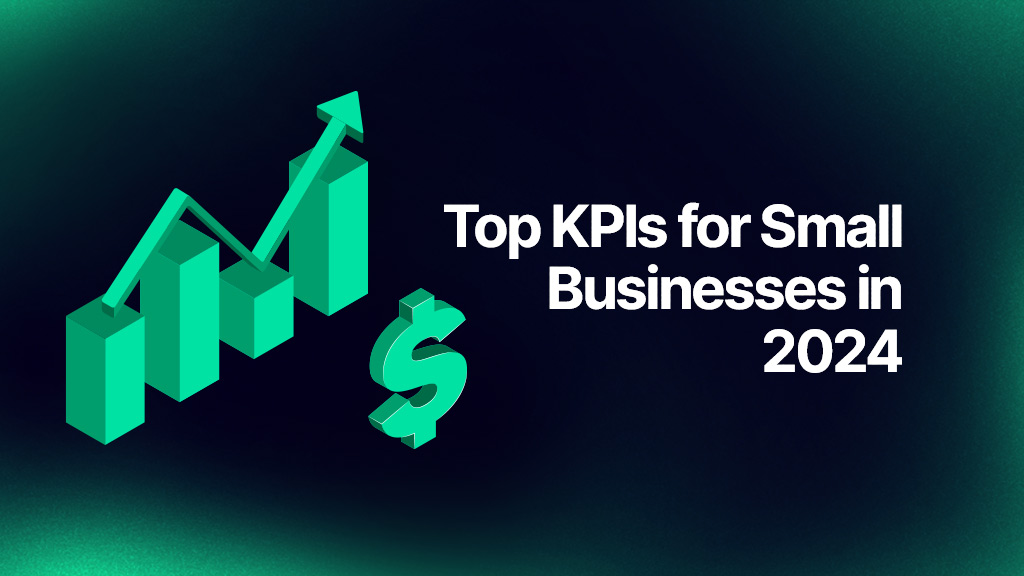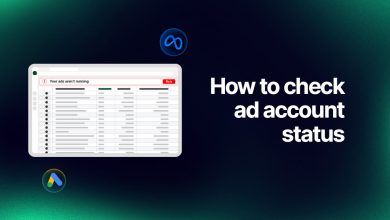Top KPIs for Small Businesses in 2025

Table of Contents
- What Are Small Business KPIs?
- Best Financial KPIs for Small Businesses
- 7. Break-even Point
- Why Do Small Businesses Need KPIs?
- How to Choose the Right KPI for Small Business?
Small Business KPIs are essential metrics that serve as guiding light, illuminating the path towards success for smaller businesses in the dynamic world of business. Running a small business is thrilling, but achieving success requires continuous evaluation and course correction. This is where Small Business KPIs (Key Performance Indicators) come in.
These quantifiable metrics are like a compass, guiding you toward your business goals and revealing areas that need improvement. In today’s ever-changing business landscape, having a clear understanding of your KPIs is more critical than ever.
As we step into 2025, it becomes increasingly important to identify and monitor the most relevant KPIs for small businesses to drive success and stay ahead in their respective industries.
This blog post will equip you with the knowledge you need to identify and track the best KPIs for small businesses in 2025. We’ll dive into essential financial metrics, explore why KPIs are crucial for success, and provide tips on choosing the right ones for your unique business needs.
What Are Small Business KPIs?
Small Business KPIs, or Key Performance Indicators, are specific metrics used to evaluate the performance and success of smaller enterprises. Imagine them as a dashboard displaying the vital signs of your company’s health. These KPIs encompass various aspects, including your financial performance, digital ads performance, customer base, operational efficiency, and overall growth trajectory.
Unlike large corporations, small businesses often operate with limited resources and face unique challenges. Therefore, the important KPIs for small businesses are tailored to their specific needs and objectives. By monitoring these small business KPIs, you gain valuable insights that empower you to:
- Identify areas that require improvement and implement targeted strategies to address them.
- Make data-driven decisions for the future, ensuring your business stays on course for success.
- Track progress towards your established goals and measure the effectiveness of your initiatives.
Best Financial KPIs for Small Businesses

Financial KPIs form the basis of understanding your small business’s overall health. These metrics provide a clear picture of your profitability, spending habits, and revenue streams. By tracking these key financial metrics, you can make informed decisions about resource allocation, pricing strategies, and overall financial sustainability.
Here are some of the most essential financial small business KPIs to focus on in 2025:
1. Net Profit
Net profit stands as a fundamental financial indicator among the small business KPIs. It’s calculated by subtracting all your expenses from your total revenue. A healthy net profit indicates your business is generating enough income to not only survive but also thrive.
The formula for calculating net profit:
Net profit = Revenue – Total Expenses
Achieving a healthy net profit is essential for sustainability and growth. Monitoring net profit allows businesses to assess their overall profitability and make informed decisions regarding cost management, pricing strategies, and resource allocation.
As a key financial KPI, net profit provides valuable insights into the effectiveness of a small business’s operations and its ability to generate sustainable returns.
2. Net Profit Margin
Taking net profit a step further, the net profit margin reveals a more detailed picture of your profitability. It measures the percentage of revenue that translates into profit after deducting all expenses, including taxes and interest.
The formula for calculating net profit margin:
Net Profit Margin = Net Profit / Revenue x 100%
This small business KPI tells you what percentage of each dollar of revenue translates into actual profit. A higher net profit margin indicates your business is more efficient at converting sales into profit. Tracking this metric helps you evaluate your pricing strategy, cost management practices, and overall business efficiency.
This KPI also provides valuable insights for benchmarking against industry standards and competitors, guiding strategic planning and financial management initiatives.
3. Gross Profit Margin
Gross profit margin focuses on your profitability after accounting for the direct costs of producing or acquiring your goods or services. This metric reflects a company’s ability to generate profit from its core business activities, excluding operating expenses like rent, salaries, and marketing.
The formula for calculating gross profit margin;
Gross Profit Margin Ratio = (Revenue – COGS)/Revenue x 100
For small businesses, a healthy gross profit margin means you’re effectively pricing your products or services to cover your core production costs. Keeping an eye on this small business KPI helps you identify areas to optimize your pricing strategy or streamline your production processes.
4. Revenue
Revenue is the total income generated from the sales of products or services before any expenses are taken out. Tracking revenue is important as it directly represents the company’s ability to generate sales and grow for small businesses.
The formula for calculating revenue;
Revenue = Sales Price x Units Sold
Understanding revenue patterns helps in making strategic decisions related to marketing, sales efforts, and resource allocation. With these small business KPIs, they can ensure they are on the right path to meeting their financial goals and sustaining long-term growth by closely monitoring revenue.
5. Customer Acquisition Cost
Customer Acquisition Cost (CAC) measures the average expense spent to acquire a new customer. This metric shows how much your business spends on marketing and sales efforts to attract and convert a single customer. So it is also one of the digital marketing KPIs for small businesses.
The formula for calculating customer acquisition cost;
Customer Acquisition Cost = (Cost of Sales + Cost of Marketing)/New Customers Acquired
This small business KPI is critical to understanding the efficiency and effectiveness of their marketing and sales efforts. CAC includes advertising, marketing campaigns, sales personnel, and other expenses involved in attracting new customers.
Monitoring CAC allows small businesses to measure the ROI of their customer acquisition strategies, create effective marketing funnels, and make data-driven decisions to optimize marketing spend.
A lower CAC indicates more efficient customer acquisition processes, which is critical for maintaining profitability and ensuring sustainable growth. Balancing CAC with customer lifetime value (LTV) helps small businesses achieve healthy financial stability.
6. Lifetime Value of a Customer

While CAC focuses on acquiring new customers, LTV, or the Lifetime Value of a Customer, takes a broader perspective. This small business KPI measures the total revenue a customer generates for your business throughout their entire relationship with you.
The formula for calculating the lifetime value of a customer;
LTV = Average Customer Value x Average Customer Lifespan
Understanding LTV is critical for small businesses since it helps them evaluate the long-term value of their customer base and ensure that customer acquisition costs are justified. By calculating LTV, businesses can gain insights into customer retention, spending habits, and the overall profitability of their marketing and sales efforts.
A higher LTV indicates that customers are generating more value over time, which can guide strategies for customer engagement, loyalty programs, and personalized marketing initiatives.
7. Break-even Point
Imagine a point where your total revenue finally eventually equals your total expenses; that’s your break-even point. This small business KPI identifies the level of sales you need to achieve to cover all your costs and avoid losses. Understanding the break-even point helps set sales targets, refine pricing strategies, and manage expenses effectively.
The formula for calculating the break-even point;
Break-even Point = Fixed Costs/(Sales Price Per Unit – Variable Cost Per Unit)
By knowing their break-even point, small businesses can set realistic sales goals, ensure pricing covers all costs, and identify opportunities to reduce expenses, paving the way to profitability and long-term success.
8. Cash Flow
Cash flow is also one of the important small business KPIs. Cash flow refers to the actual movement of money in and out of your business at any time. It’s a historical record of your financial activity, including income and expenses.
The formula for calculating cash flow;
Cash Flow = Total Cash Inflows − Total Cash Outflows
Positive cash flow is important for covering expenses, investing in growth, and ensuring sustainability. By tracking cash flow, owners can anticipate shortfalls and plan effectively.
Regular cash flow monitoring enables small businesses to ensure they have sufficient cash reserves to meet their obligations, navigate seasonal fluctuations, and make informed strategic decisions.
9. Quick Ratio
Beyond cash flow, the Quick Ratio, also known as the acid-test ratio, provides a deeper insight into your short-term financial health. This small business KPI measures your ability to meet immediate debt obligations using your most liquid assets.
The formula for calculating quick ratio;
Quick Ratio = (Cash + Marketable Securities + Accounts Receivable)/Current Liabilities
A Quick Ratio of 1 or above is generally considered healthy, indicating you have sufficient liquid assets to cover your short-term liabilities. However, the ideal ratio can vary depending on your industry and business model. Monitoring this KPI helps small businesses ensure they can meet their immediate obligations and manage financial risks effectively.
10. Monthly Recurring Revenue
Monthly Recurring Revenue (MRR) is an important small business KPI, especially those with subscription-based models. MRR measures the predictable and recurring revenue a business can expect each month, providing a clear picture of financial stability and growth potential.
The formula for calculating Monthly Recurring Revenue;
MRR = Number of Monthly Subscribers x Average Revenue per User (ARPU)
Tracking MRR allows small businesses to understand revenue trends, forecast future income, and make informed decisions about scaling operations. Consistently increasing MRR indicates a growing and sustainable revenue stream, which is crucial for long-term business success.
These are the essential financial metrics for small businesses. You can use these small business KPIs to grow your business faster.
Why Do Small Businesses Need KPIs?

Small businesses need Key Performance Indicators (KPIs) to effectively measure and manage their performance. KPIs provide a clear framework for evaluating various aspects of a business, from financial health to operational efficiency.
Small business KPIs guide you towards your business goals and reveal areas that need improvement. By tracking these quantifiable metrics, small businesses gain various advantages:
- Improved Decision-Making: KPIs provide data-driven insights to inform strategic decisions about marketing, operations, and resource allocation.
- Identify Strengths and Weaknesses: Tracking KPIs allows you to pinpoint areas where your business excels and areas that need improvement.
- Track Progress and Goals: KPIs enable you to monitor progress towards your established goals and measure the effectiveness of your initiatives.
- Increased Efficiency: Focusing on key metrics helps streamline processes and improve overall business efficiency.
- Improved Communication and Alignment: KPIs help ensure everyone in your company is working towards the same goals by establishing clear performance benchmarks.
Simply, KPIs are essential tools that help small businesses stay focused, competitive, and on track toward their long-term goals.
How to Choose the Right KPI for Small Business?
The beauty of small business KPIs lies in their customizability. While we’ve explored some essential financial KPIs, the best ones for your small business will depend on your specific industry, goals, and business model.
So, choosing the right KPIs and metrics for small businesses is important for accurately measuring performance and achieving strategic goals. Here are some steps to help identify the most relevant KPIs:
- Align with your business goals: KPIs should directly connect to your overall business objectives. Are you aiming to increase brand awareness, boost customer acquisition, or improve operational efficiency? Choose KPIs that provide insights relevant to your specific goals.
- Focus on a manageable number of KPIs: Tracking too many metrics can be overwhelming and distract your focus. Aim for a small number (5-7) of high-impact KPIs that provide the most useful insights for your business.
- Consider Industry Standards: Look at common KPIs in your industry to ensure you are measuring performance against relevant benchmarks. This can help you stay competitive and understand where you stand in the market.
- Balance Short-Term and Long-Term Goals: Include a mix of KPIs that address immediate needs and long-term objectives. This ensures a comprehensive approach to performance management.
- Regularly review and adjust: Your business and goals will evolve over time. Regularly review your KPIs (quarterly or biannually) to ensure they remain relevant and adjust your selection as needed.
By following these steps, you can create a customized KPI dashboard that provides a clear picture of your small business’s health and guides you toward achieving your strategic objectives.
Remember, small business KPIs are powerful tools, but they’re only as valuable as the actions you take based on the insights they reveal. Use your KPIs to make data-driven decisions, optimize your strategies, and propel your small business toward sustainable growth.





Thanks a lot for the post. Much obliged.
Hey there J, thanks!
I appreciate you sharing this blog.Much thanks again. Fantastic.
Thanks Celina, stay tuned!
Thanks again for the post.Really looking forward to read more. Really Cool.
Thanks J, stay tuned!
I’m not that much of a internet reader to be honest but your sites really nice,
keep it up! I’ll go ahead and bookmark your site to come back later.
Cheers
We’re glad you liked our blog. Stay tuned!